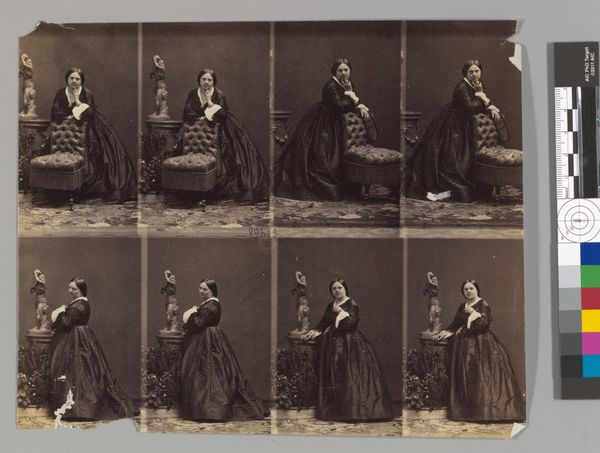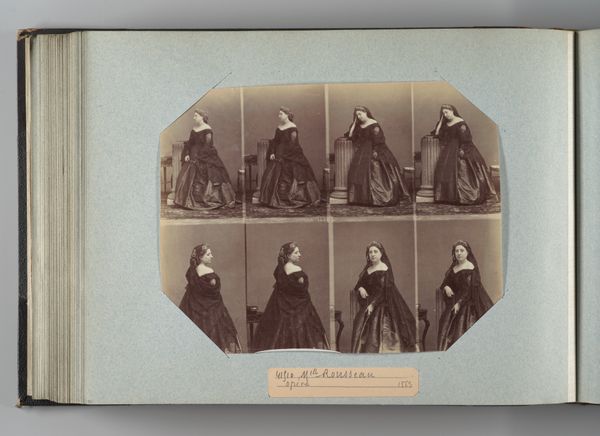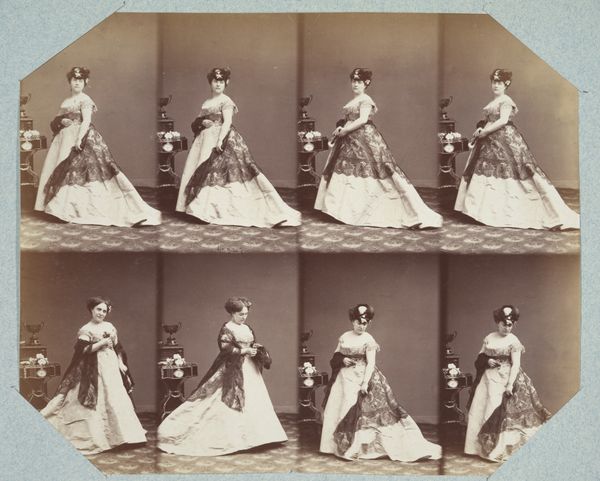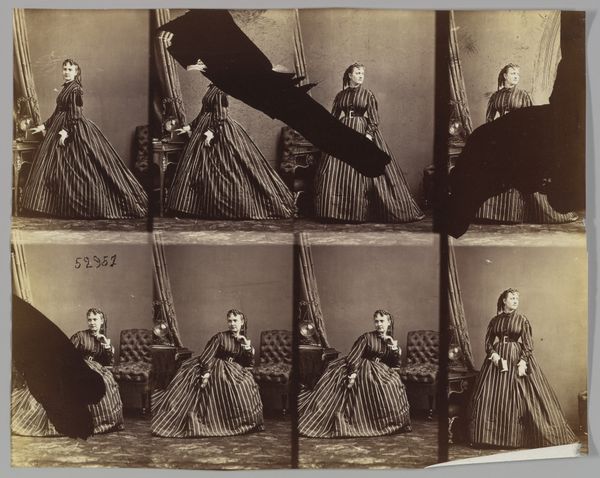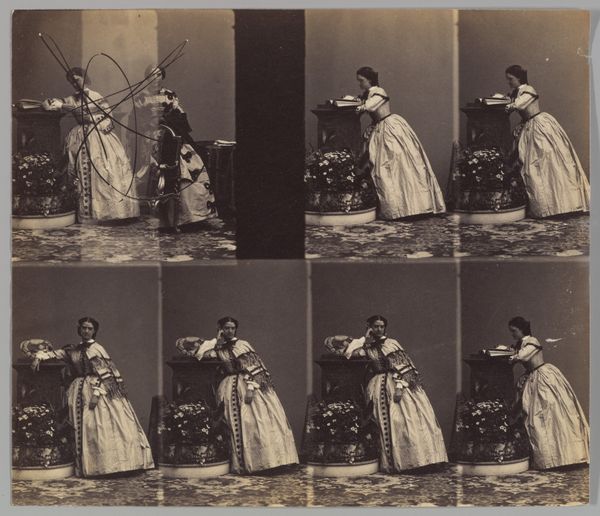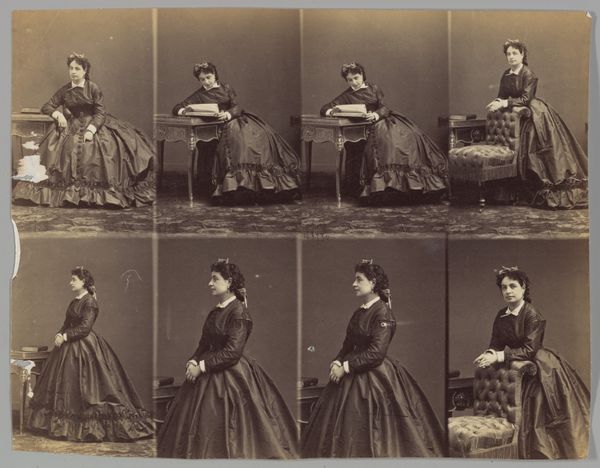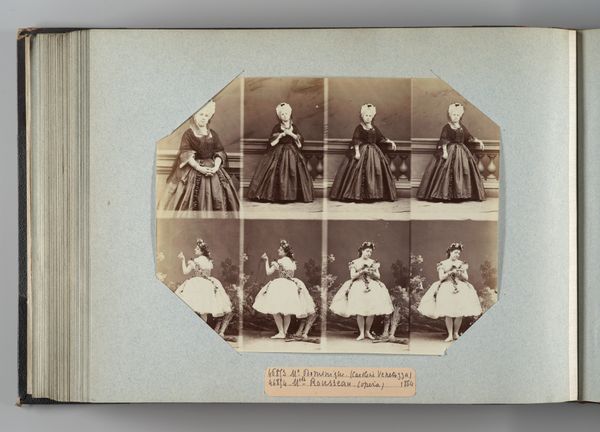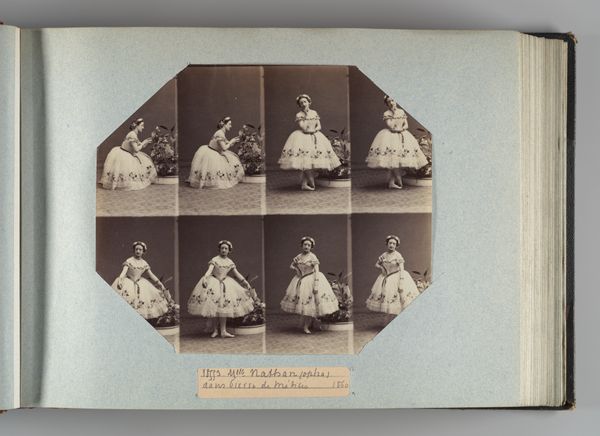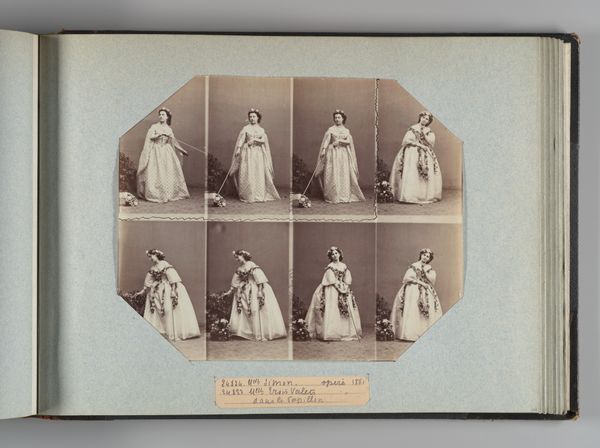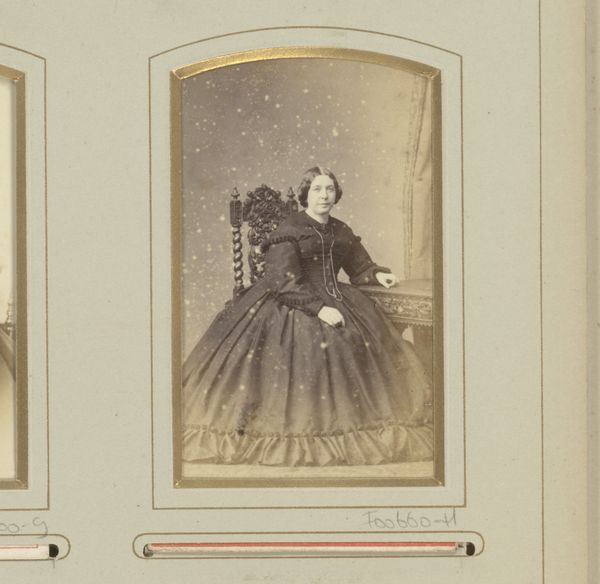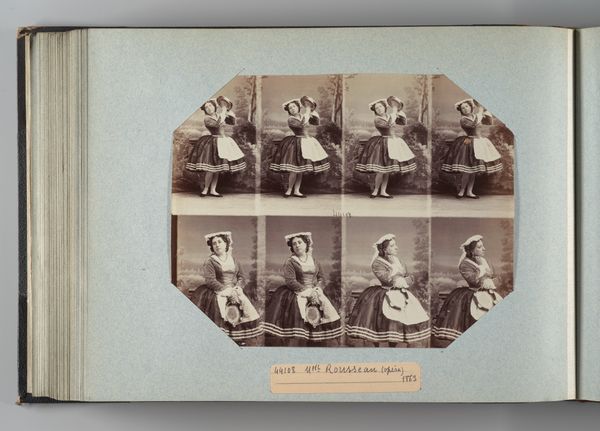
daguerreotype, photography, albumen-print
#
portrait
#
sculpture
#
daguerreotype
#
archive photography
#
photography
#
historical fashion
#
costume
#
19th century
#
costume
#
albumen-print
Dimensions: Image: 20.1 × 23.3 cm (7 15/16 × 9 3/16 in.)
Copyright: Public Domain
Editor: This is a multi-image albumen print, titled "Berthe", created in 1862 by André-Adolphe-Eugène Disdéri. It’s currently held at the Metropolitan Museum of Art. What strikes me is how it shows a single subject in what looks like a sequence, almost like a very early attempt at animation. How do you interpret this work? Curator: Well, look at the figure positioned next to statuary. This doubling speaks to how photography, particularly portraiture, wrestled with its own status as art versus mere record. Do you see how the subject’s poses mirror, in a sense, those classical sculptures meant to embody timeless ideals of beauty and virtue? Editor: I hadn't thought of it that way. So, the photograph is not just documenting Berthe, but also placing her within a certain cultural framework? Curator: Precisely! And consider the multiple images. This points to photography’s burgeoning industrialization. Disdéri patented this very process to produce multiple prints quickly and cheaply – cartes de visite. Each pose, while seemingly candid, is carefully constructed to convey a particular message, often reinforcing social norms and aspirations. These repeating images function as symbols of reproduction, circulation, and the commodification of identity in the 19th century. What is the lady's dark dress telling us? Editor: I'm not sure. Does it suggest modesty or formality? Curator: Perhaps both. Black dye, notably expensive then, was worn to signal social standing and sobriety. Every visual element is deliberate and rich with possible meanings. Editor: I see. So, it's about looking beyond the surface and understanding the symbolic language of the image. I never thought about how many messages could be packed into one photograph! Curator: Indeed! The power of images lies in their ability to compress and convey so much cultural and psychological weight through relatively simple forms. The daguerreotype truly marked an interesting stage of development for fashion and art.
Comments
No comments
Be the first to comment and join the conversation on the ultimate creative platform.
